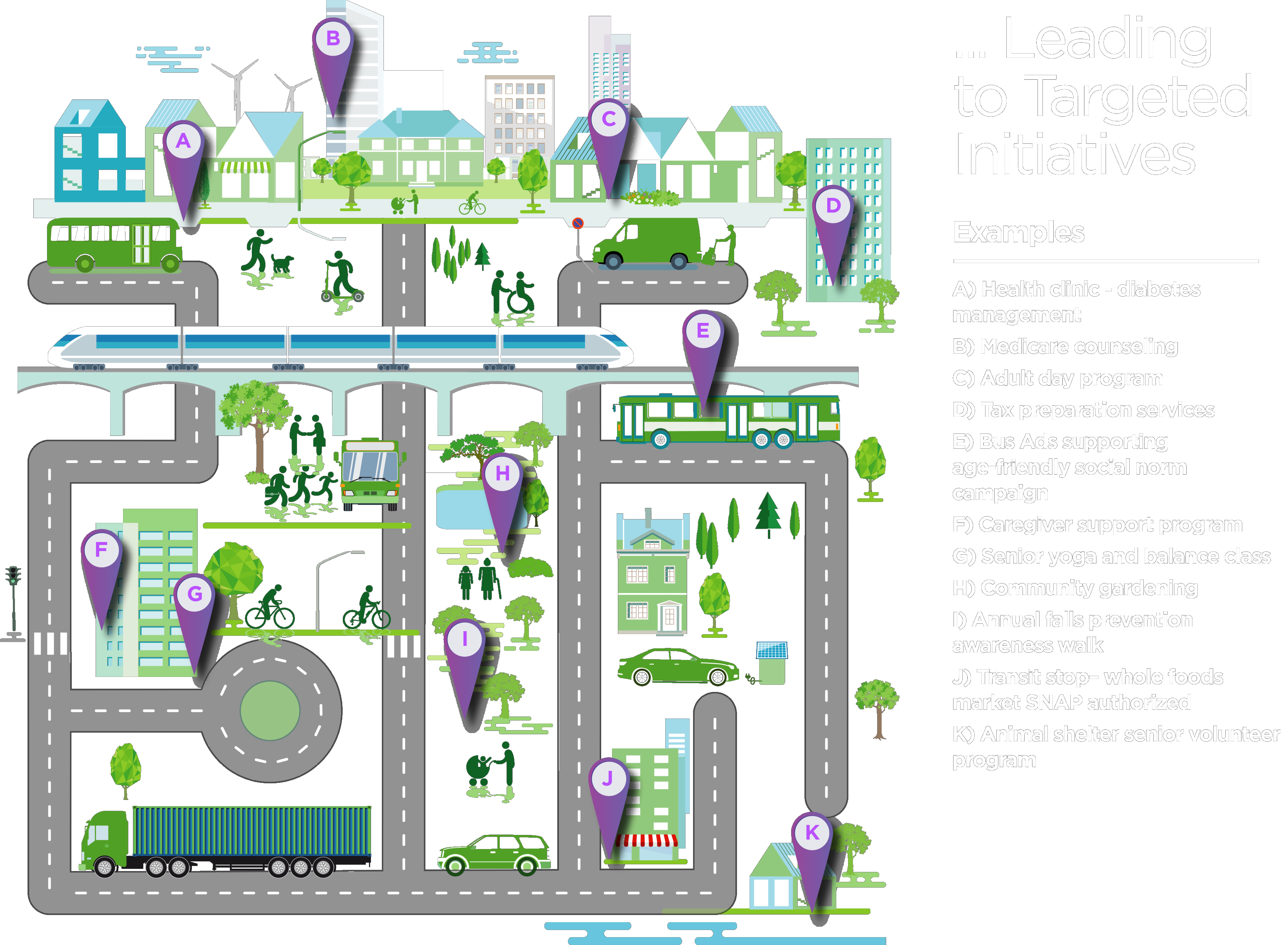Our Process
Click each phase button for more details
- Research of the study area’s data availability
- Determination of what available data will best support ILWD analysis
- Data acquisition process, determined by data owners
- Cleaning and formatting data
- Data ingestion, aggregation, and transformation
- Perform ILWD location-based analysis
- Create the ILWD Needs map divided into 5 categories
- Conduct gap analysis identifying correlations to support prevention and services focus
- Create supporting tools – such as area proportion by Needs category, population by Needs category, interactive ArcGIS maps of risk and protective factor existing infrastructure, and risk factors for highest needs categories
- Acquire psychographic data based on the socioeconomic and demographic community composition of those over 60 years of age
- Conduct segmentation analysis on the highest Needs categories in comparison to all other categories
- Develop online reporting for stakeholders to share findings and strategies, such as incentivization, community engagement, and communication approaches with community prevention and support teams
- Present and educate regarding ILWD findings
- Identify and determine prevention and resource distribution goals
- Provide a road map, including tools and processes, for aligning existing resources and developing stakeholder collaboration to implement new interventions
